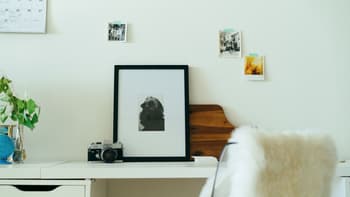Imagine you have purchased a block of land and are searching for an architect to help you design your new home. One architect provides you with a drawing of the design or house plan you want, but you cannot afford their work. In the end, you settle with another architect who is happy to follow the same design for a lower price. Here, an issue may arise as to whether this is an infringement on the first architect’s copyright. This article will explore when you may be infringing on an architect’s building plans and how to avoid such infringement.
The Architect’s Copyright
Copyright is an automatic right, which protects the expression of an original idea. It protects literary works, computer programs, films, sound recordings, broadcasts and artistic works such as architectural drawings. The Copyright Act 1968 gives the owner of the artistic work exclusive rights, including the right to:
- reproduce the work in a material form;
- publish the work; and
- communicate the work to the public.
This means that, unless otherwise agreed, an architect owns the copyright in their work. Their work may include design plans, drawings and detailed descriptions.

Your business’ brand represents your values, identity and reputation. Learn how to create a successful brand and protect it.
Avoiding Copyright Infringement of Building Plans
Because an architect generally owns the copyright in their word, it is important that you are careful when using their designs as inspiration. Some key questions you should ask yourself to avoid copyright infringement are discussed below.
1. Is it a Substantial Reproduction?
You may be infringing on the architect’s copyright if a substantial part of the material was copied. In determining what is substantial, the question is one of quality rather than quantity; you will be more likely to have infringed if you emulate a distinctive part of the design. For example, if you change the plan of one or two rooms but the overall house design is still the same as the original drawings, it is most likely copyright infringement. However, this would not apply if the first architect’s plans show little to no resemblance to the second architect’s plans.
2. Did You Copy Only the Concept?
Copyright does not protect ideas or concepts but only the expression of such. Applying the previous example, you may be able to avoid a copyright infringement claim if you can prove the second architect’s design of your house was based on the concepts discussed rather than the actual drawings.
The most effective way to emulate a concept without infringing copyright is to describe to the new architect your preferred design without providing them with the original drawings. This way, the design is more likely to be based on your new architect’s original efforts and the overall concept you envisioned rather than copying the first architect’s artistic work. Sharing the drawings with a third party would also mean you have infringed copyright in any case.
3. Is it Original?
Copyright will only protect original work, which must be the product of the creator’s own intellectual effort. Therefore, if the design plan includes entirely common or standard elements that are widely used in the industry and lack originality, you are unlikely to be infringing on copyright.
4. Can You Ask for Permission?
The architect, as the copyright owner, can allow you to use their work through a licence or assignment. Though this will likely incur extra costs for you, it will ensure you avoid facing action in court for copyright infringement.
A licence allows another person to use the copyrighted material without transferring ownership. This allows both the copyright owner and the licensee to use the copyrighted material. A licence can be exclusive, non-exclusive or subject to various terms, so it is important to seek legal advice if you are unsure about the scope of the licence agreement.
On the other hand, an assignment transfers copyright ownership to you. This means that you will have all of the exclusive rights related to the copyright, though ownership may still be subject to certain limitations.
Continue reading this article below the formPotential Damages for Infringement
If a court finds that you have infringed on your architect’s copyright, they could make several orders against you. The table below summarises these potential orders and uses the previous example to explain when they would apply.
| Type of Order | When It Would Apply |
| An injunction to restrain you from continuing the infringing conduct | This would only apply if the house was not yet completed. |
| To pay the copyright owner compensation for the damage you have caused by infringing | Damages in these circumstances are usually equal to the fees you would have paid the copyright owner if you used their work lawfully. This could be a license fee or a royalty fee. |
| Additional damages | The court can award additional damages for several reasons, including if the infringement was particularly flagrant. For example, you may have to pay additional damages if the architect warns you that copying the plans would infringe on their copyright, but you ignore the warning and use them anyway. |
Key Takeaways
Your architect’s building plans are protected by copyright, and respecting these protections is essential to avoiding legal repercussions. As such, if you wish to use or adapt these plans, the best approach is to ask first. You may then receive permission via a licence or assignment. To effectively avoid copyright infringement, also consider:
- using only the underlying ideas from the original plan;
- limiting the key elements of the original plan in the new plan; and
- ensuring your new architect’s work is their own unique expression.
If you would like assistance regarding how to avoid infringing on building plan copyright, contact our experienced intellectual property lawyers as part of our LegalVision membership. For a low monthly fee, you will have unlimited access to lawyers to answer your questions and draft and review your documents. Call us today on 1300 544 755 or visit our membership page.
Frequently Asked Questions
The test for copyright infringement is whether a substantial part of the architect’s work has been copied. Thus, whether you need to seek copyright permission depends on the extent of the changes you have made. If you have made significant changes and there is no resemblance to the original plans, it is unlikely that you would be infringing on the copyright of the architect. In this case, you would not need to seek permission.
If the owner of a work discovers that you have used their work without permission, they can apply to the court for a remedy based on your infringing conduct. This may include seeking compensation, or, where the building has not been completed, an injunction to stop you from proceeding with the build.
We appreciate your feedback – your submission has been successfully received.











